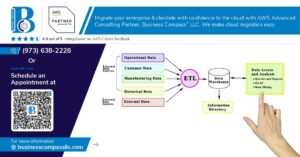AWS infrastructure moves fast, and manual monitoring can’t keep up. This guide shows DevOps engineers, cloud architects, and system administrators how to automate CloudWatch monitoring by creating intelligent alarms that send instant SNS notifications when issues arise.
Setting up automated AWS monitoring saves you from constantly checking dashboards and missing critical problems. You’ll learn to build a monitoring system that watches your infrastructure 24/7 and alerts the right people at the right time.
We’ll walk through configuring SNS for instant alert delivery so your team gets notified immediately when metrics cross thresholds. You’ll also discover how to automate alarm creation with Infrastructure as Code, letting you deploy consistent monitoring across multiple environments without clicking through the console repeatedly. Finally, we’ll cover advanced notification strategies that send different alerts to different teams based on severity and service impact.
By the end, you’ll have a complete AWS alert configuration that catches problems early and keeps your systems running smoothly.
Understanding CloudWatch Monitoring Fundamentals
Key CloudWatch metrics that matter for your infrastructure
CPU utilization, memory usage, disk I/O, and network throughput form the backbone of effective AWS CloudWatch monitoring. EC2 instances require tracking of CPUUtilization above 80% for sustained periods, while EBS volumes need monitoring for VolumeReadOps and VolumeWriteOps to prevent storage bottlenecks. RDS databases demand attention to DatabaseConnections, ReadLatency, and WriteLatency metrics. Application Load Balancers should track TargetResponseTime and HTTPCode_Target_5XX_Count to catch performance degradation early. Lambda functions require monitoring of Duration, Errors, and Throttles to maintain optimal serverless performance.
Cost-effective monitoring strategies for small to enterprise applications
Start with basic CloudWatch alarm setup focusing on critical metrics rather than monitoring everything from day one. Small applications benefit from monitoring 5-10 essential metrics like CPU, memory, and error rates, while enterprise environments can scale to hundreds of automated AWS monitoring rules. Use composite alarms to reduce SNS notification costs by combining multiple conditions into single alerts. Set up CloudWatch dashboards with 15-minute intervals for non-critical metrics and 1-minute intervals only for mission-critical services. Leverage AWS Free Tier limits for the first 10 alarms and 1,000 API requests monthly.
Common monitoring blind spots that lead to outages
Database connection pool exhaustion often goes undetected without proper RDS connection monitoring, causing sudden application failures. Memory leaks in containerized applications slip through CPU-only monitoring strategies, requiring custom CloudWatch metrics for memory tracking. Auto Scaling Groups frequently fail during traffic spikes when monitoring relies solely on average CPU instead of tracking individual instance health. SSL certificate expiration catches teams off guard without automated certificate monitoring through CloudWatch Events. Network-level issues between availability zones remain invisible without VPC Flow Logs integration with CloudWatch alarms, leading to intermittent connectivity problems.
Setting Up Essential CloudWatch Alarms for Maximum Coverage
CPU Utilization Thresholds That Prevent Performance Degradation
Set CPU utilization alarms at 70% for warning and 85% for critical alerts across EC2 instances. Configure thresholds based on instance types – smaller instances need lower limits while compute-optimized instances handle higher loads. Monitor sustained high CPU over 5-minute periods rather than brief spikes to avoid false alarms. Create separate thresholds for different workloads since web servers and database servers have distinct performance profiles.
Memory and Disk Space Alerts to Avoid System Crashes
Memory monitoring requires CloudWatch Agent installation to track RAM usage, swap utilization, and buffer cache metrics. Set memory alerts at 80% usage with escalating notifications at 90%. Disk space monitoring covers root volumes and application directories – trigger warnings at 75% capacity and critical alerts at 85%. Include inode monitoring for Linux systems since running out of file system entries crashes applications even with available disk space.
Network Traffic Monitoring for Early Bottleneck Detection
Network performance alarms track bandwidth utilization, packet loss, and connection errors across your AWS infrastructure. Monitor NetworkIn and NetworkOut metrics for EC2 instances, setting thresholds based on instance network performance baselines. Configure ALB and NLB target response time alerts to catch backend issues before users notice degradation. Track VPC Flow Logs anomalies and unusual traffic patterns that might indicate security threats or capacity planning needs.
Application-Specific Metrics for Custom Monitoring Needs
Custom CloudWatch metrics provide deep visibility into application behavior beyond standard infrastructure monitoring. Create alarms for database connection pools, queue depths, cache hit ratios, and API response times specific to your applications. Use CloudWatch custom namespaces to organize metrics logically and set business-relevant thresholds like order processing rates or user session counts. Integrate application logs with CloudWatch Logs Insights to trigger alarms on error patterns and performance anomalies.
Configuring SNS for Instant Alert Delivery
Creating topic subscriptions for targeted team notifications
Setting up SNS topic subscriptions allows you to route specific CloudWatch alarm notifications to the right teams. Create separate SNS topics for different services or severity levels – one for critical database alerts going to your DBA team, another for application errors reaching developers. Each subscription can target specific email addresses, phone numbers, or integration endpoints. Use subscription filters to ensure each team only receives alerts relevant to their responsibilities, reducing notification fatigue while maintaining accountability.
Multi-channel delivery options beyond email alerts
SNS notifications AWS supports multiple delivery channels beyond basic email alerts. Configure SMS messaging for critical after-hours incidents that demand immediate attention. Set up HTTP/HTTPS endpoints to integrate with existing incident management tools like PagerDuty, Slack, or Microsoft Teams. Lambda function subscriptions enable custom notification logic, allowing you to format messages differently based on alarm severity or trigger automated remediation workflows. Mobile push notifications through AWS mobile SDKs keep your team connected even when they’re away from their computers.
Message formatting for actionable incident information
Default CloudWatch SNS integration messages often lack context needed for quick decision-making. Customize alarm descriptions with specific runbook links, affected service details, and suggested troubleshooting steps. Include metric values, thresholds, and timestamps to help responders understand severity immediately. Structure messages with clear subject lines that indicate priority levels and affected systems. Add direct links to AWS console dashboards and relevant CloudWatch metrics so team members can quickly access detailed information without searching through multiple interfaces during incident response.
Automating Alarm Creation with Infrastructure as Code
CloudFormation templates for consistent alarm deployment
CloudFormation templates provide the gold standard for deploying AWS CloudWatch alarms consistently across environments. These JSON or YAML templates define alarm configurations as code, enabling teams to version control their monitoring infrastructure and deploy identical setups across development, staging, and production environments. Templates can include alarm thresholds, comparison operators, evaluation periods, and SNS topic integrations, ensuring every deployment follows the same monitoring standards. The declarative nature of CloudFormation means you specify what you want, and AWS handles the implementation details, reducing human error and configuration drift.
Terraform configurations for cross-cloud compatibility
Terraform offers powerful Infrastructure as Code capabilities for AWS monitoring automation while maintaining flexibility for multi-cloud deployments. The aws_cloudwatch_metric_alarm resource allows teams to define CloudWatch alarm setup parameters using HashiCorp Configuration Language (HCL), making configurations more readable than traditional JSON formats. Terraform’s state management tracks alarm modifications, enabling safe updates and rollbacks. Variables and modules create reusable alarm patterns that can be customized per environment, while the planning phase shows exactly what changes will occur before execution. This approach particularly benefits organizations managing infrastructure across multiple cloud providers or those requiring granular control over resource provisioning.
AWS CLI scripts for rapid bulk alarm creation
AWS CLI scripts excel at rapid bulk alarm creation when you need to deploy dozens or hundreds of CloudWatch alarms quickly. Scripts can iterate through resource lists, dynamically generating alarm names, descriptions, and thresholds based on naming conventions or configuration files. The aws cloudwatch put-metric-alarm command accepts parameters for alarm configuration, enabling programmatic creation with custom logic for different resource types. Bash or Python scripts can pull resource information from AWS APIs, automatically discovering EC2 instances, RDS databases, or Lambda functions that need monitoring. This approach works exceptionally well for environments with frequently changing infrastructure or when onboarding new applications that follow standardized monitoring patterns.
Best practices for version-controlled monitoring setups
Version-controlled monitoring setups transform CloudWatch alarm management from ad-hoc configurations to professional infrastructure management. Store all alarm definitions in Git repositories alongside application code, enabling peer reviews of monitoring changes and maintaining audit trails of who modified what and when. Implement branching strategies where alarm changes follow the same review process as code changes, preventing unauthorized modifications to critical monitoring infrastructure. Use semantic versioning for monitoring templates, allowing teams to track major changes versus minor threshold adjustments. Automated testing can validate alarm configurations before deployment, checking for syntax errors, missing resources, or conflicting settings. Integration with CI/CD pipelines ensures monitoring infrastructure stays synchronized with application deployments, automatically updating alarms when new services launch or existing ones change.
Advanced Notification Strategies for Operational Excellence
Escalation Workflows for Critical vs Non-Critical Alerts
Create tiered alert systems that match urgency levels with appropriate response teams. Critical alerts should trigger immediate PagerDuty notifications to on-call engineers, while non-critical alerts can route to shared Slack channels or email groups. Configure CloudWatch alarm states with distinct SNS topics – one for P0/P1 incidents requiring immediate action, another for P2/P3 issues that can wait for business hours. Set up time-based escalation rules where unacknowledged critical alerts automatically promote to senior staff after 15 minutes.
Integration with Incident Management Tools like PagerDuty
Connect AWS SNS notifications directly to PagerDuty through webhook integrations or dedicated SNS-to-PagerDuty Lambda functions. Configure service mappings that automatically assign incidents to the correct teams based on alarm dimensions and tags. Set up intelligent routing rules that create high-priority incidents for production environment alerts while sending development alerts as low-priority notifications. Enable bidirectional sync where PagerDuty acknowledgments update CloudWatch alarm states, preventing duplicate notifications across your incident management workflow.
Custom Lambda Functions for Intelligent Alert Filtering
Deploy Lambda functions that analyze CloudWatch alarm data before triggering notifications, filtering out known transient issues and correlating related alerts. Build smart logic that suppresses redundant notifications during maintenance windows or deployment periods. Create context-aware filtering that considers factors like time of day, environment tags, and historical patterns to reduce noise. Implement alert correlation engines that group related infrastructure alerts into single comprehensive notifications, providing operations teams with clearer situational awareness.
Reducing Alert Fatigue Through Smart Threshold Tuning
Implement dynamic thresholds that adapt based on historical performance patterns and seasonal trends rather than static values. Use CloudWatch Anomaly Detection to establish baseline behaviors and trigger alerts only when metrics deviate significantly from expected ranges. Configure composite alarms that require multiple related metrics to breach thresholds before firing, reducing false positives from temporary spikes. Regularly analyze alert patterns and adjust sensitivity levels based on actual incident correlation, ensuring AWS CloudWatch alarms maintain high signal-to-noise ratios for operational excellence.
Setting up automated monitoring on AWS doesn’t have to be complicated. CloudWatch alarms paired with SNS notifications give you the power to catch issues before they become major problems. When you combine basic alarm setup with infrastructure as code and smart notification strategies, you create a monitoring system that works around the clock without constant manual oversight.
The real magic happens when you move beyond basic alerts and start thinking strategically about your notification workflows. By automating alarm creation and fine-tuning your alert delivery, you’ll spend less time putting out fires and more time building great software. Start with the essentials, automate what you can, and gradually add more sophisticated monitoring as your infrastructure grows. Your future self will thank you when that critical alert wakes you up at 3 AM instead of your customers calling at 9 AM.




















